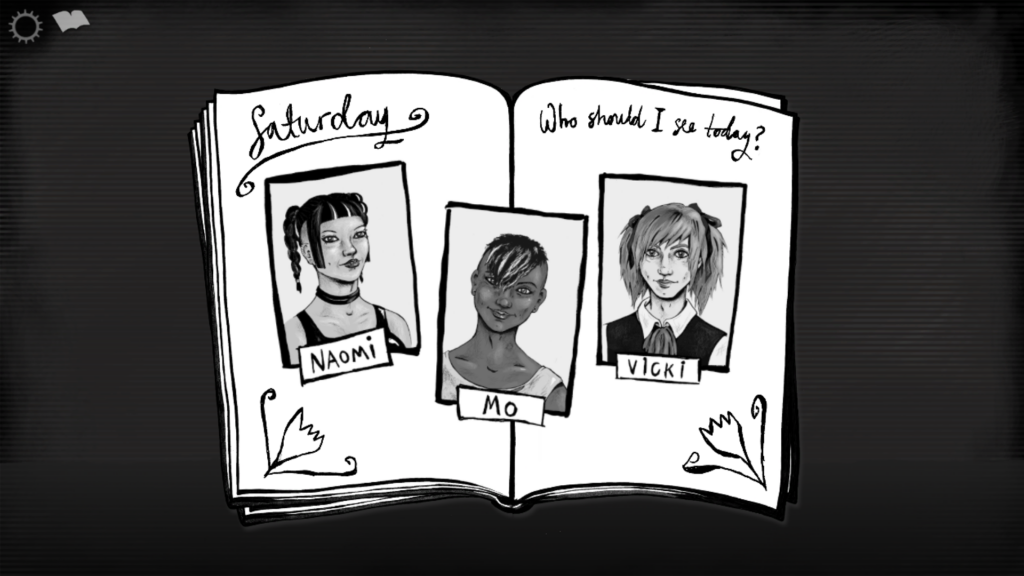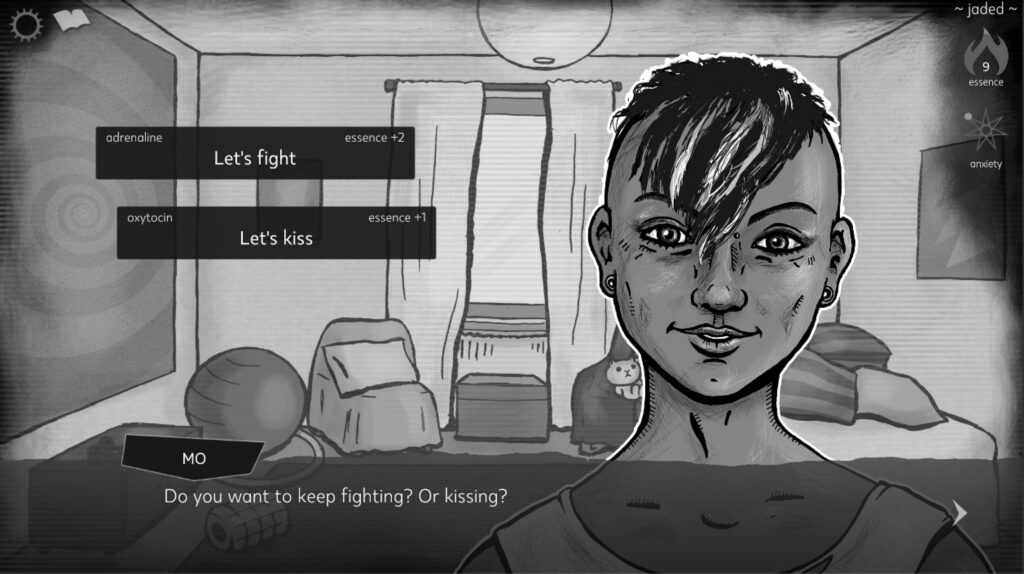
Systems for Emotions – Exploring Relation Games
The games we’re making are relation games: games centered around existential questions and ways to relate to others. We also have a large focus on LGBTQ+ issues and characters. In 2019, we released a game called Knife Sisters, and this blog post, as well as a few upcoming ones, will be centered around what we learned from that process, specifically in regards to the characters and relationships portrayed through the game.
Systems made to evoke emotions
In relation games there are more things in play than “just” game mechanics. Players play relation games because they wish to relate and connect to game characters: it could for example be to learn about themselves and others, or to fulfill the need for love and/or sex. To fulfill that need through a game, the characters and the potential relationships need to correspond with the player’s tastes, preferences, and/or desires. Otherwise they won’t feel attracted to the game and its content.

The characters they will relate to will also be complemented by story and gameplay – and wherever there is gameplay, there is a system. Even the most story heavy games are based on systems. Those systems can be fairly simple or very complex, but they are always there. When you create a game, its content will exist within the boundaries and functionality of that game. What kind of choices can the player make? How many choices are there, and how will they affect the story? How is the story framed to fit the scope of the game? The answers to those questions are what makes up this specific game’s system.
Working with stories as systems
We are not always used to working with a story in relation to a fixed frame – usually stories are more flowing, and even if there is a structure (for instance, the three act structure), a writer can be rather free when it comes to assigning the story to the structure. In a game, this is not always the case. The system and structure of a game can be much more rigid, and thus affect the content and story a lot. The story and characters that are chosen to play a part in the game are there because they have a function in the system. The player is then using the system to cater to their own emotional desires/needs.

When you design a story based game, you probably have a story in mind, that you wish to tell through the game and the player’s actions. To make a game based on a story, one way is to break the story into pieces that can be handled by and understood by the player. The story pieces can be more or less scattered, but are nonetheless explored through gameplay. For the player to feel excited about it, the outcome has to be somewhat open (or at least, feel open).
There are probably an infinite number of ways to work with story in a game. We’ve explored it our own way – and in my next post I will talk about how we did it in Knife Sisters. Knife Sisters is constructed with the intention to tell a story about dependence and empathy. That affected what roles the characters in the game had, but the construction we made also had an effect on the story and player experience. The construction of a game is in part a conscious process – you make decisions based on what you aim to achieve – but since it’s also very complex, some of the effects of the decisions you make will emerge first when the game is played by others – and that is one of the things that makes game design so interesting.
What are your thoughts on game design and telling stories through games? Let us know through our social channels what you think!
